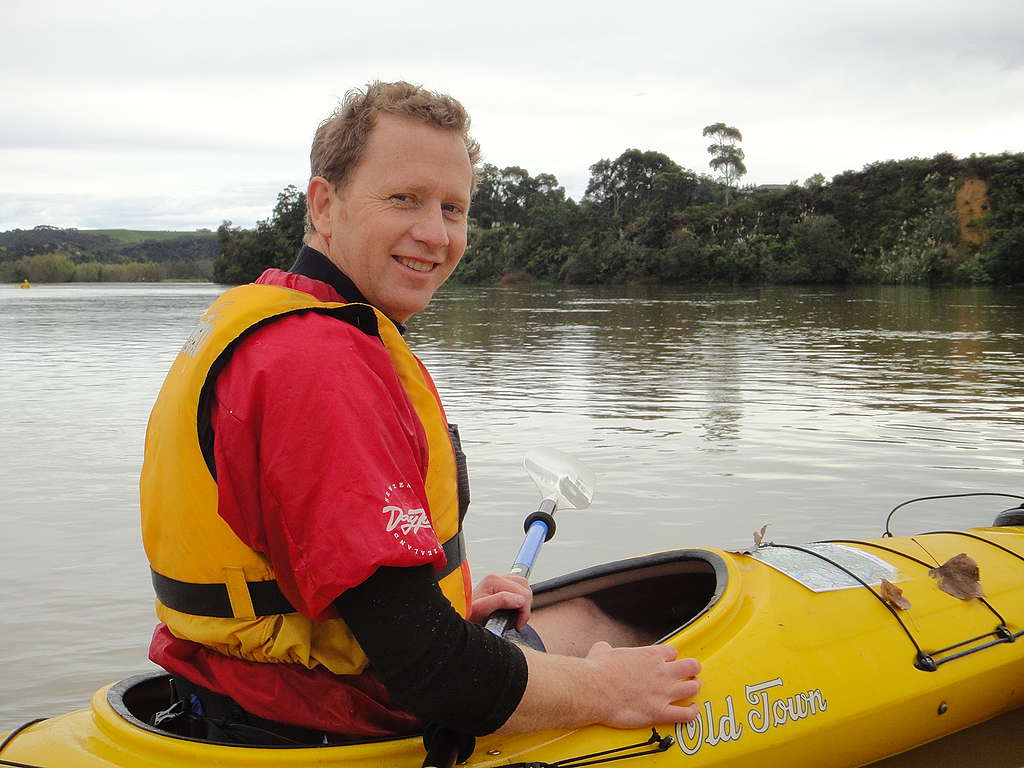Source: Greenpeace New Zealand
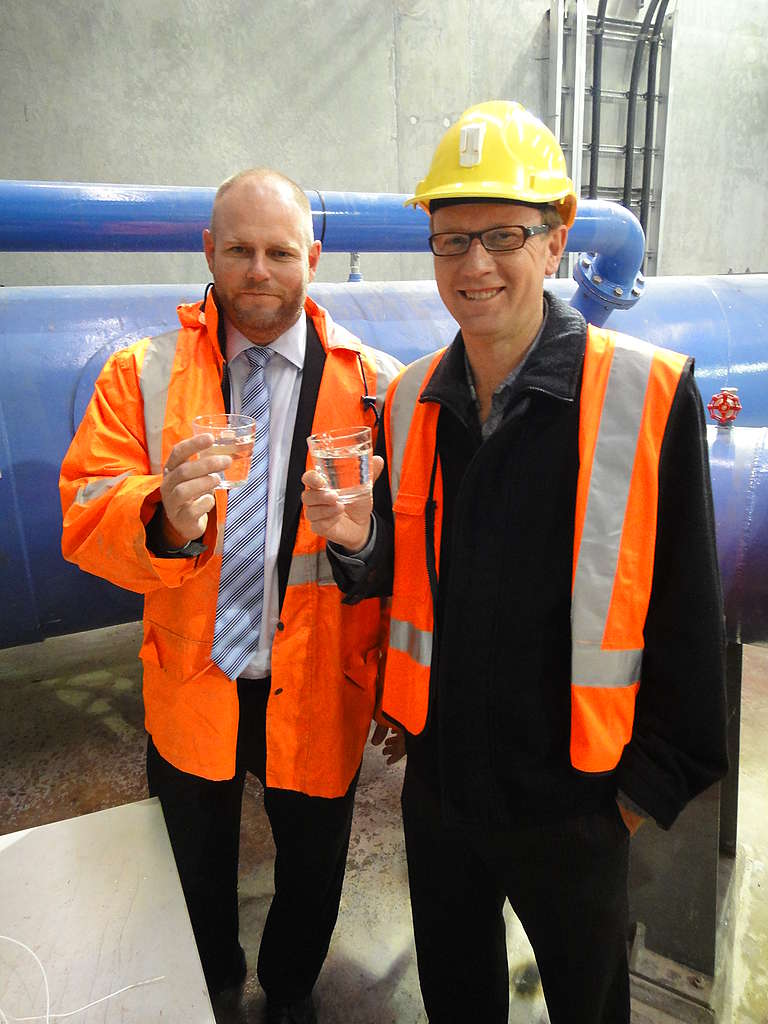
As the 2020 drought has deepened, Auckland has become increasingly dependent on the Waikato River for its drinking water.
But the Waikato River itself is very polluted – largely from intensive agriculture – and hence, making the water clean enough to drink, is an expensive business.
Nine years ago I had a good look at this issue. I went through the water treatment plant at Tuakau, I paddled the Waikato River, I said hello to all the cattle down on the unfenced riverbanks. Not much has changed in those nine years so I thought it would be good to run the story again here.
April 2011: Let me begin at the end. This is me holding a glass of water from the Waikato River after it’s been through the Watercare treatment plant near Tuakau.

I’m standing next to Shayne Cunis, Watercare’s Water Treatment Manager. Shayne has been involved in various battles that Watercare has conducted to try to stop the Waikato River getting even more polluted, and, much to his chagrin, I mentioned him and Watercare’s battles in Parliament a few years back.
This is me drinking the water.
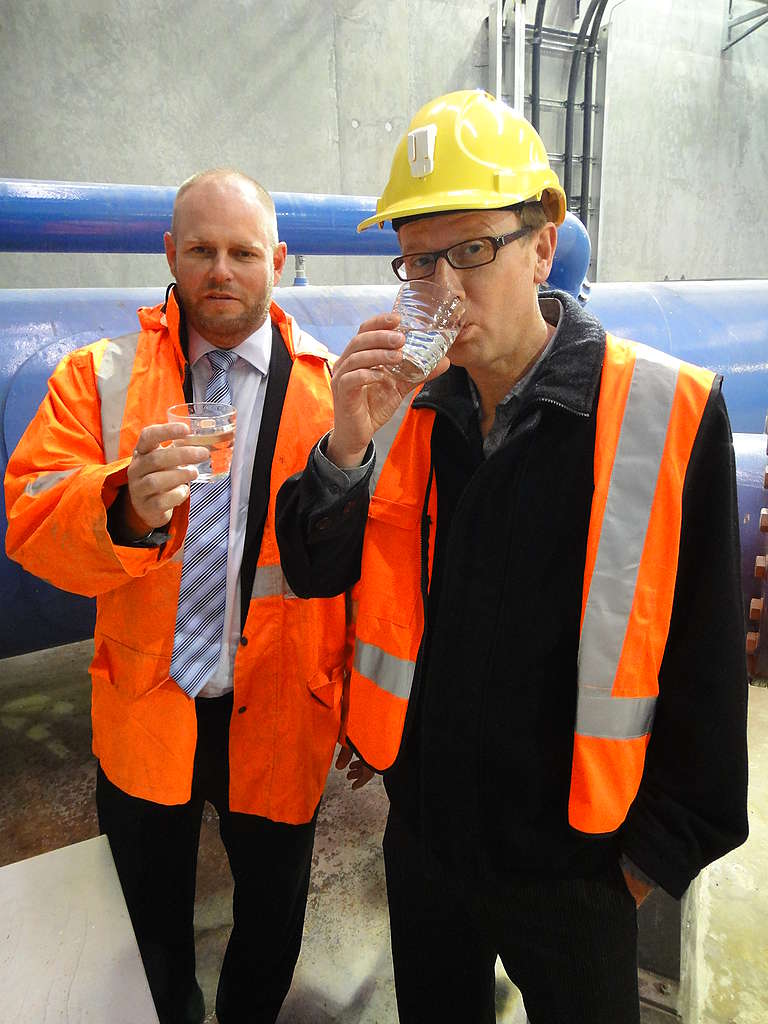
Tastes pretty damn good actually, but by crikey it takes a lot of effort to make it this good.
This is what the river water looks like after it is drawn from the river, screened for big objects and has coagulants added.
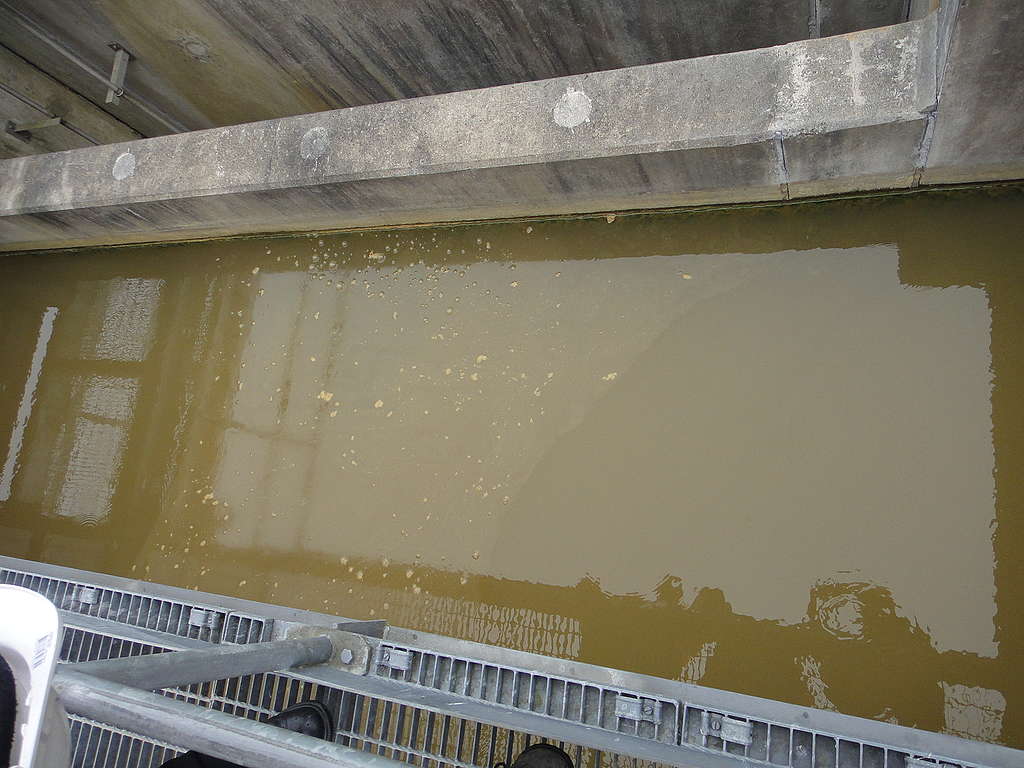
Pretty ugly. You may be able to see large globs of muck coagulating on the aluminium sulphate coagulant.
Then this is what it looks like after the coagulated gunk is removed.
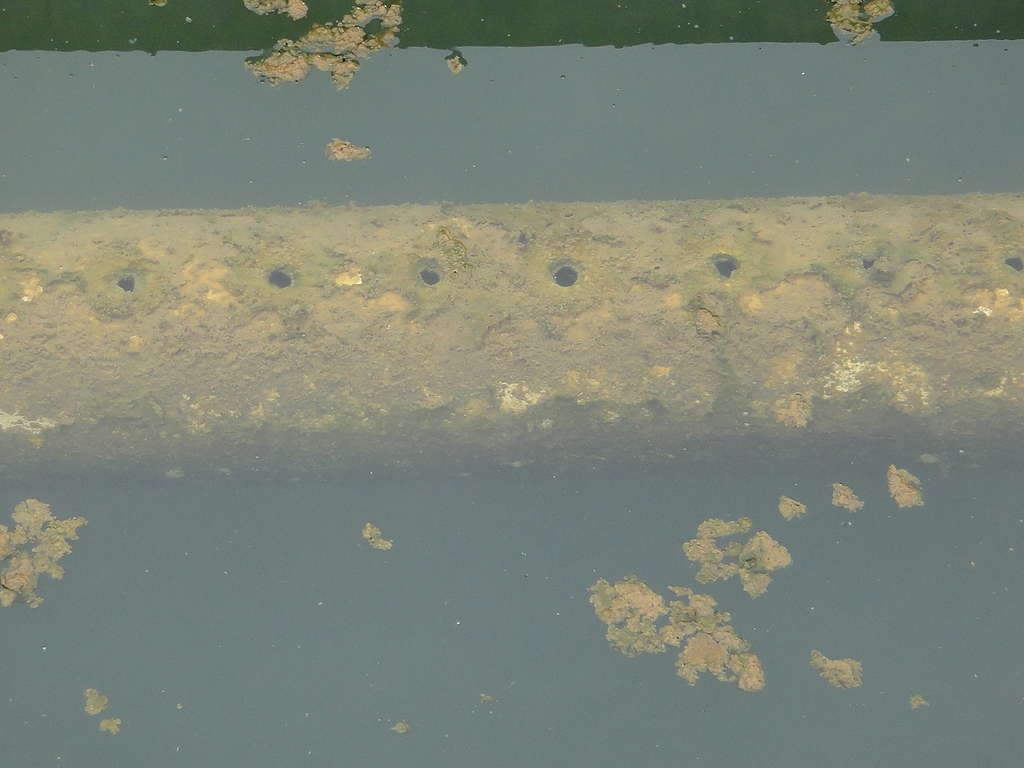
Much cleaner but still with a lot of nutrients. There is algae visibly growing on the surface and on the pipes.
Then the river water goes into the really fancy part of the treatment plant which is the membrane filtration – lots of long straws with tiny little holes in them – the holes are 0.035 microns across (micron is one thousandth of a millimeter). So only things that are smaller than 0.035 microns can get through into the straw and to your tap – which stops the protozoa such as giardia and cryptosporidium (from all the animal faeces in the river).
This is what the straws look like when they are out of the water.
After getting through the straws then they go through carbon filters, which apparently have nematodes and other things growing on them which filter the water even further. You can see through the clean water down to the carbon filters in this picture.
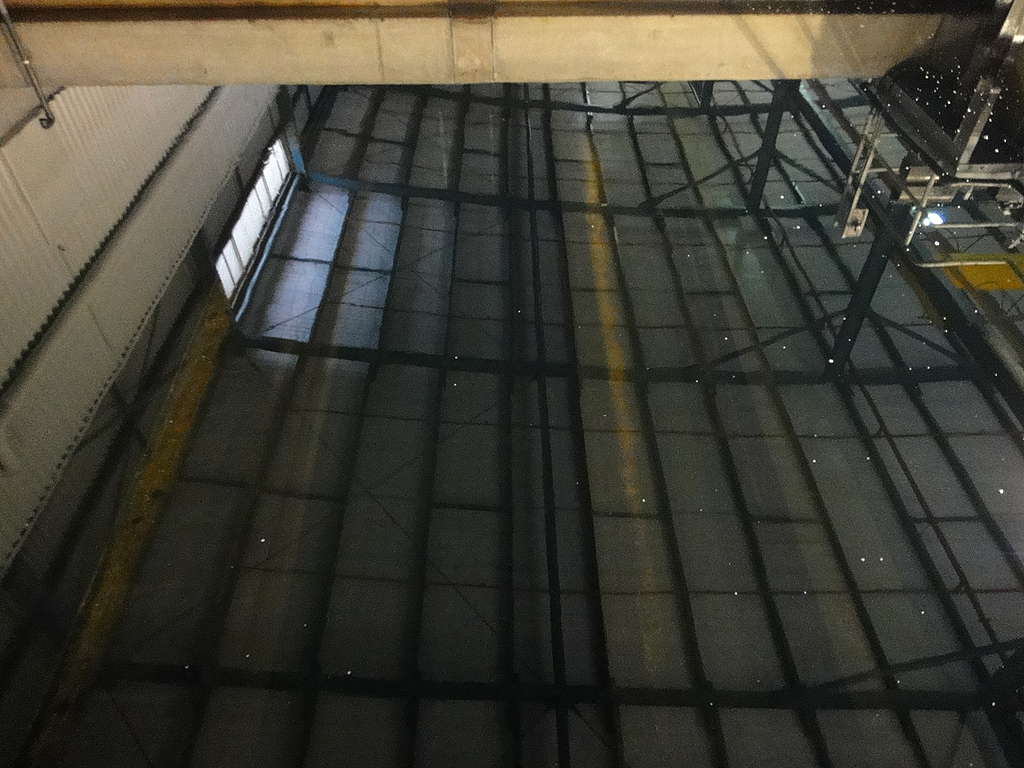
Then it gets a bit of chlorine added to kill the viruses and anything else. A bit of fluoride is added, as well as some lime to get the pH right.
And then, out comes clean water that is sent in a pipe over the Bombay Hills to contribute about 10% of Auckland’s water – a number that is likely to increase over time as Auckland grows.
This very sophisticated treatment plant cost around $155m. It delivers water at around 19c per cubic metre (1000 litres), which is considerably higher than the cost of the water coming out of the dams in the Hunua Ranges.
The Waikato river treatment plant and pipeline were built after the 1994 drought and were pretty controversial at the time. But it’s here to stay.
What I like about it is that it means that about one in three New Zealanders (Auckland, Hamilton et al) have a very direct interest in the quality of the water coming down the Waikato River because their drinking water is extracted from that catchment. The more polluted that water is, the more expensive and difficult it is to treat it. And if the water gets more polluted, then Watercare will have to invest in even more sophisticated treatment equipment than they have now.
So how bad is the water at the end of the Waikato river?
This is a photo of the mouth of the Waikato taken from the plane.
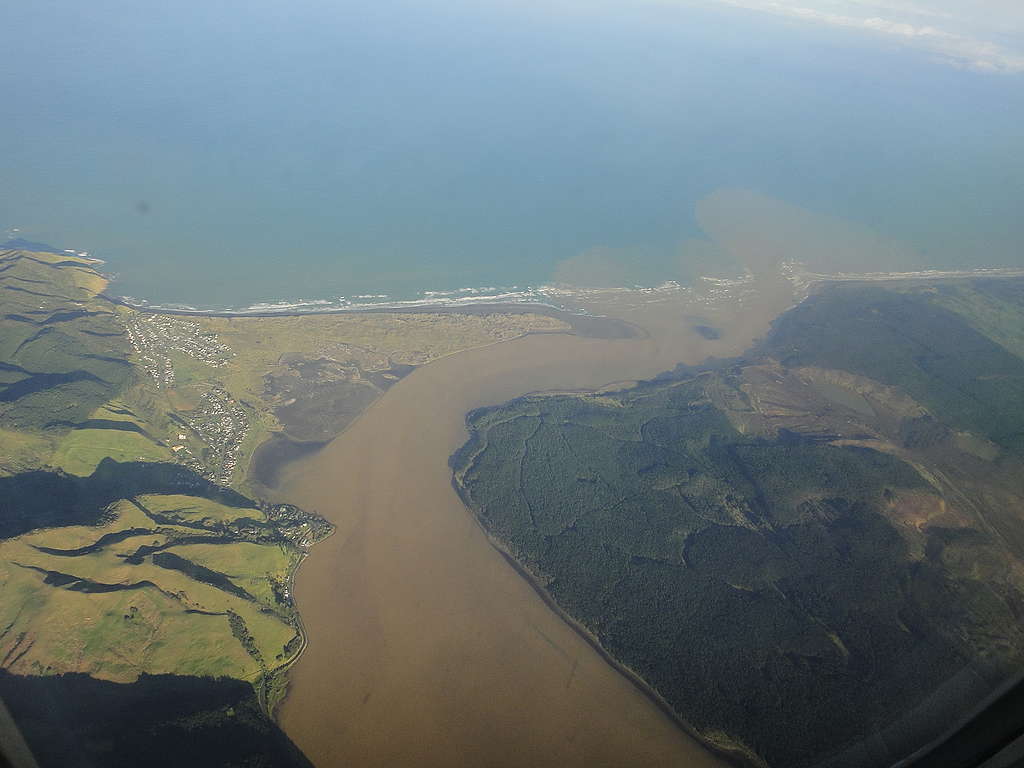
Really bad is the answer. It has masses of sediment, lots of nitrogen and phosphorous that feeds algal blooms and heaps of faeces and everything associated with faeces such as bacteria and viruses. There is also a fair bit of heavy metals, some of it natural and some added by Contact’s geothermal plant (they are one of the few geothermal plants that doesn’t re-inject).
A short way upstream of the mouth, the level of faeces near Auckland’s water intake regularly breaches swimming standards. The faeces is largely animal in origin.
In Hamilton they say “Flush twice, Auckland needs the water”. And it’s true that Hamilton’s treated sewerage goes into the Waikato, but only a small fraction of the pollution in the river is due to Hamilton’s sewerage or other point source discharges. Around 70% of all the nitrogen in the river, for example, comes from non-point sources, largely intensive agriculture.
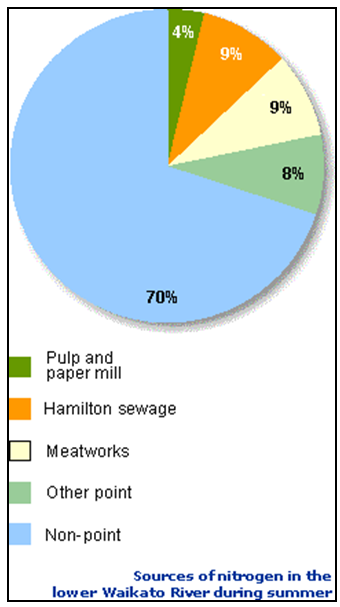
At the top of the river, as the water leaves Lake Taupō, it is so clean that you can see 12m or more through it. By the time Aucklanders extract it at Tuakau, you can’t see your feet if the water is half way up your ankles.
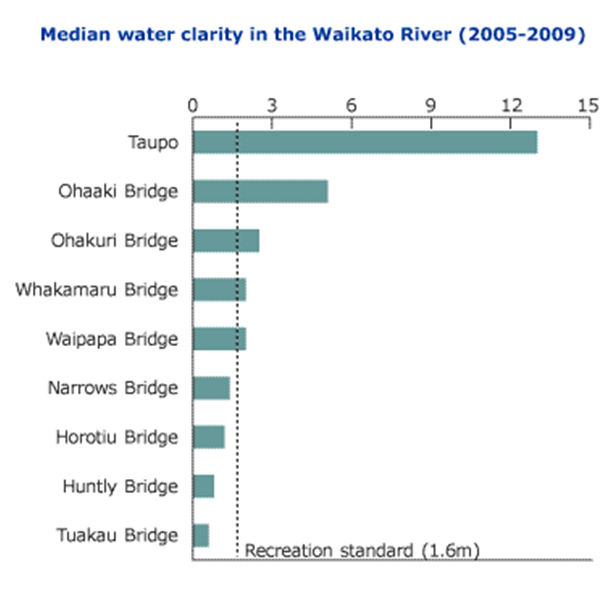
To get a first-hand view of the river I went for a paddle yesterday, starting at Mercer, past Auckland’s water intake, and pulling out at the Tuakau bridge.
At Mercer I met with Rangi Mahuta and Sally from Waikato Tanui. They are pretty distressed about the state of the river. Tainui are now part of the joint management River Authority which was a Treaty settlement deal. It has some funding to clean up the river and some regulatory tools. The Government has appointed John Luxton to co-chair the Authority with Tuku Morgan, which, given Luxton’s background with Open Country Cheese with its record of pollution, doesn’t fill me with hope. But we shall see.
Joining me on the paddle were Al Fleming and Jon Wenham from Forest and Bird.
Jon on the river:
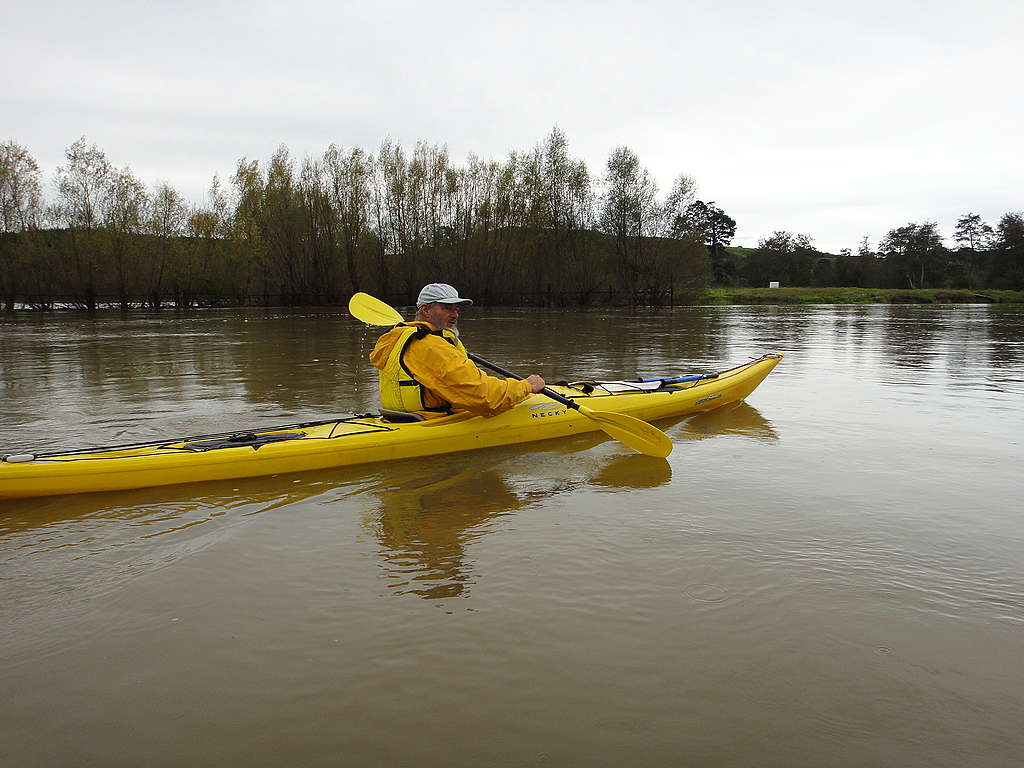
All the rain meant the river was probably even browner than usual – you can see the paddle disappearing into the water.
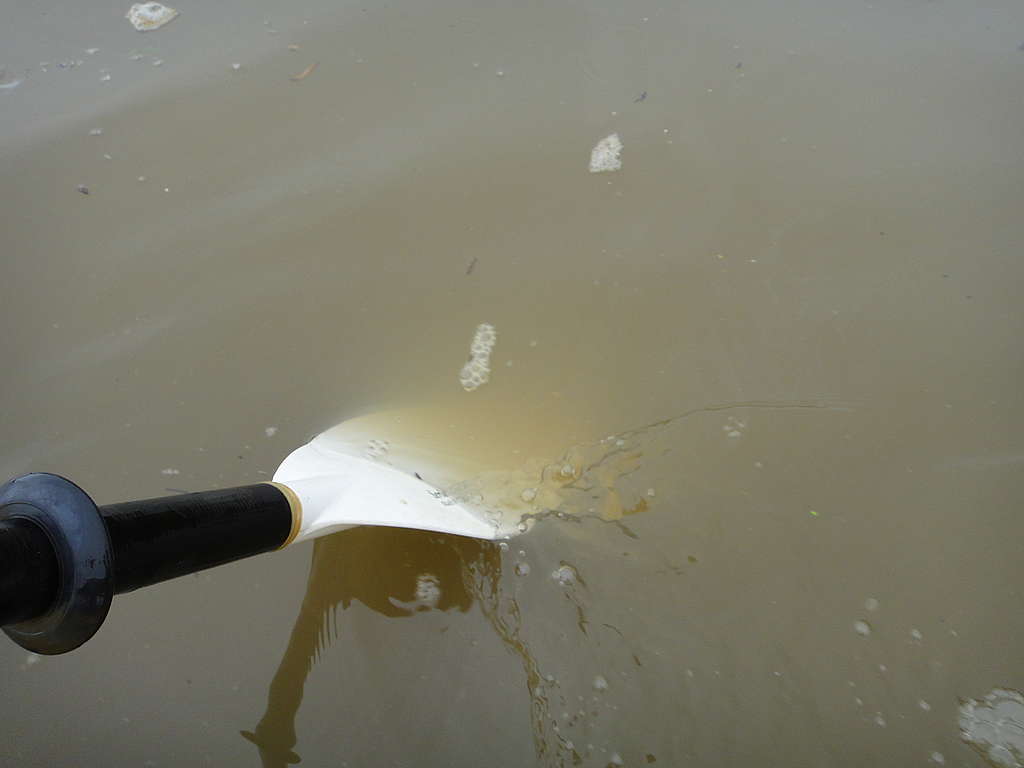
There were some nice bits of regenerating kahikatea forest, here’s Al in front of some.
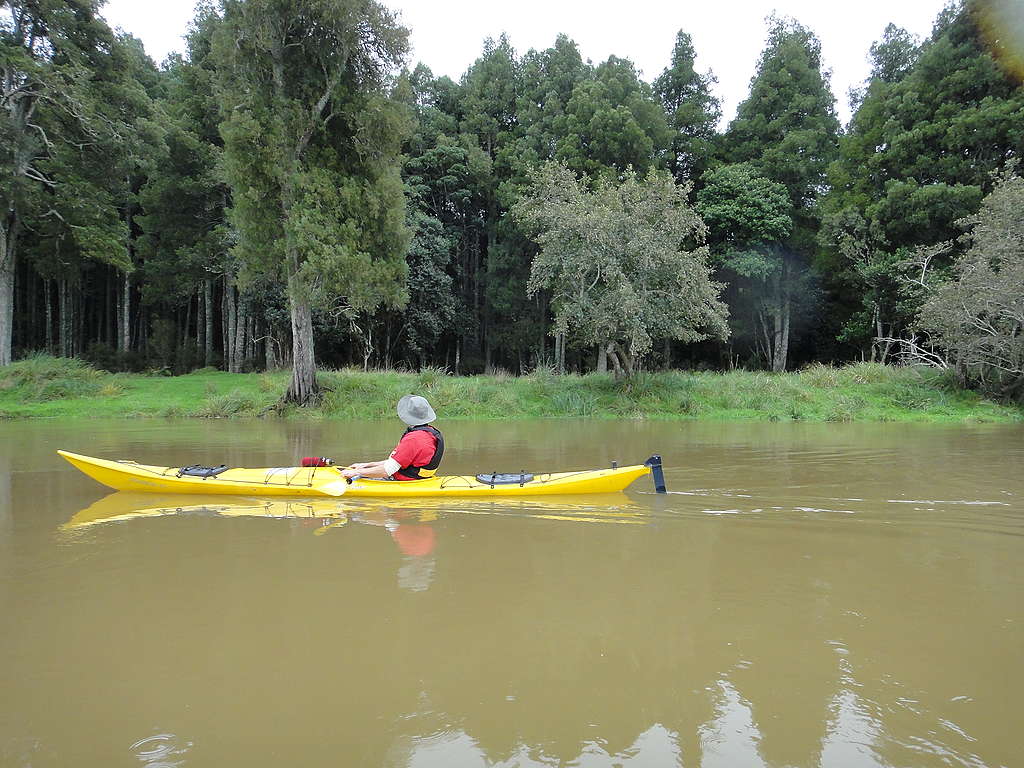
We paddled down past the intake for Auckland’s water at this buoy.
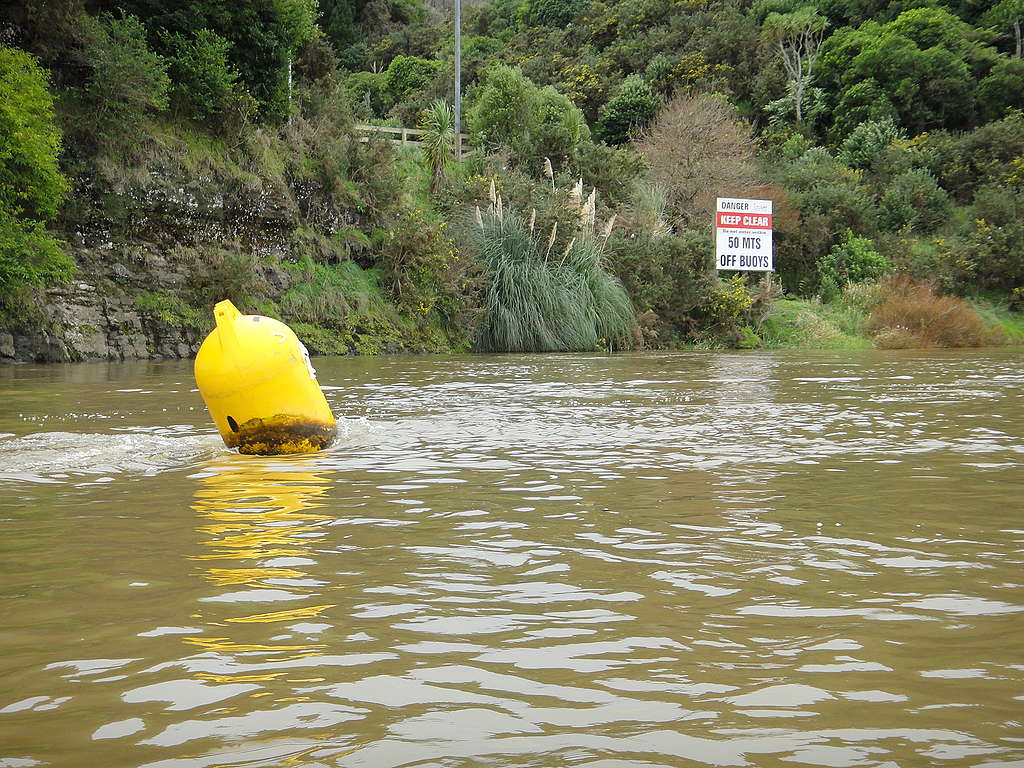
And then we came across some pretty average farming practice in these parts.
These animals are unfenced right on the Waikato River. I went over to have a look and they decided I was interesting too, and a big bunch of them came over to have a look at the kayak.
The faeces and urine go straight into the river and the trampling on the edge adds to erosion and sediment. This is what Fed Farmers are defending against regulation.
It is very basic to fence animals out of large rivers, but even this very basic level of good farming practice isn’t in place on the river. We need rules in place to regulate intensive agriculture like this so that we can clean up our rivers.
The real challenge is that getting basic good farming practice in place is only the beginning. Even with good practice there is still a huge run-off of nitrogen from intensive agriculture. As I said in the House back in 2008
Watercare … stated in a submission that discharges from just one industrial dairy development in the Waikato catchment involving Landcorp could mean “the nitrate increase and increased risk of protozoa would cause a decline in water quality”, and “If irrigation was allowed for this one project, summer low flows in the Waikato would reduce by a further 13 percent and river nutrient concentrations could go up by 120 percent.”
Thankfully that particular project didn’t go ahead after the financial crisis but there are plenty more that will take off with dairy prices at high levels. We need clean water rules.
